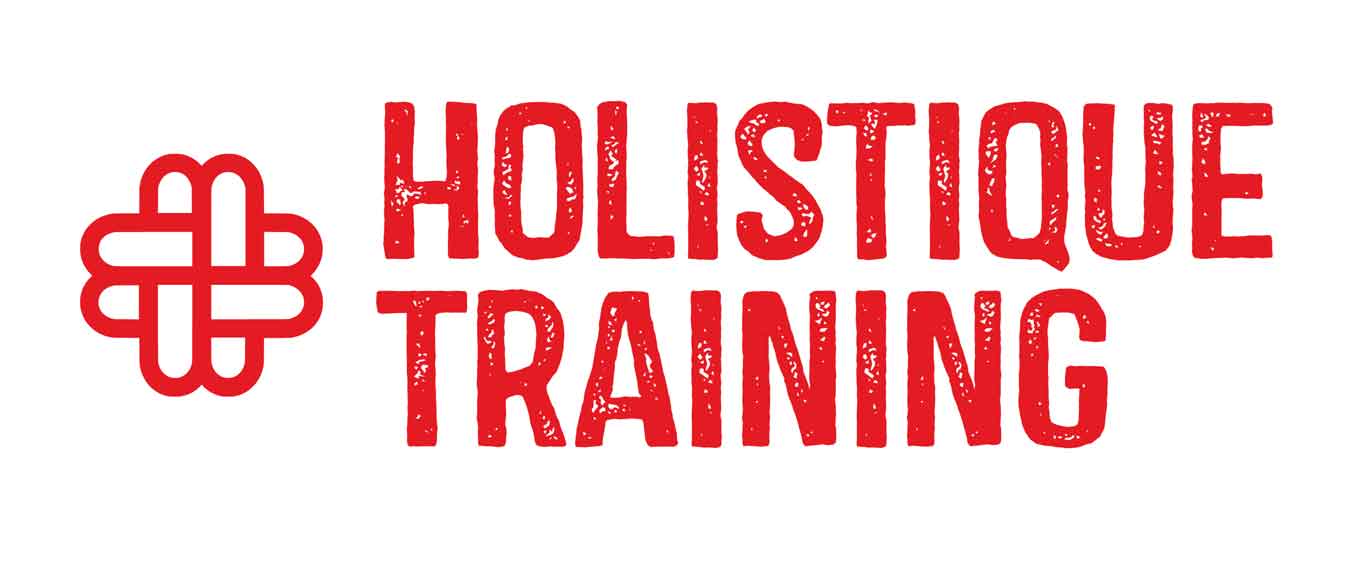- Table of Contents
- Introduction
- What is Laissez-Faire Leadership?
- Origins of Laissez-Faire Leadership
- Key Characteristics of Laissez-Faire Leadership
- 1. Minimal Supervision
- 2. High Trust in Team Members
- 3. Resource Provision
- 4. Freedom and Autonomy
- 5. Low Intervention
- 6. Focus on Results
- 7. Encouragement of Self-Leadership
- 8. Emphasis on Team Dynamics
- Benefits of the Laissez-Faire Leadership Style
- 1. Fosters Innovation and Creativity
- 2. Empowers Team Members
- 3. Encourages Skill Development
- 4. Reduces Leader Burnout
- 5. Promotes a Collaborative Culture
- 3 Industries Where Laissez-Faire Leadership Works
- 1. Technology and Innovation
- 2. Creative Fields
- 3. Academia and Research
- Why These Industries Thrive Under Laissez-Faire Leadership
- Laissez-Faire Leadership vs. Other Leadership Styles
- Laissez-Faire vs. Authoritarian Leadership
- Laissez-Faire vs. Democratic Leadership
- Laissez-Faire vs. Transformational Leadership
- Limitations of Laissez-Faire Leadership
- 1. Lack of Direction and Structure
- 2. Risk of Low Accountability
- 3. Potential for Miscommunication
- 4. Ineffectiveness with Inexperienced Teams
- 5. Difficulty in Managing Crisis Situations
- When to Avoid Using Laissez-Faire Leadership
- High-Stakes Environments
- Teams Lacking Experience
- Crisis Situations
- Best Practices in Implementing Laissez-Faire Leadership
- 1. Build a Skilled and Self-Motivated Team
- 2. Clearly Define Goals and Expectations
- 3. Provide the Necessary Resources
- 4. Foster Open Communication
- 5. Monitor Progress Without Micromanaging
- 6. Be Ready to Step In When Necessary
- Conclusion
Introduction
Leadership is the cornerstone of any successful organization. The way leaders guide their teams can significantly impact productivity, morale, and innovation. Among the various leadership styles, one stands out for its unique approach: Laissez-Faire leadership. This blog post will explore the concept of Laissez-Faire leadership, its origins, key characteristics, benefits, and challenges. We’ll also examine industries where it thrives, compare it to other leadership styles, and provide best practices for implementing it effectively. By the end, you’ll have a thorough understanding of whether Laissez-Faire leadership might be the right fit for your team or organization.
What is Laissez-Faire Leadership?
Laissez-Faire leadership, often referred to as "hands-off" leadership, is a style where leaders provide minimal direct supervision and allow their team members to make decisions independently. The term “laissez-faire” is French for “let do” or “let it be,” reflecting the essence of this approach: trust in the team’s ability to manage their responsibilities without constant oversight.
This leadership style is built on the belief that employees are capable, self-motivated, and skilled enough to perform their tasks without the need for micromanagement. Leaders who adopt this style focus on providing the necessary resources, removing obstacles, and stepping in only when absolutely necessary. While this approach may seem passive at first glance, it requires a deep understanding of team dynamics and a high level of trust in the abilities of team members.
Origins of Laissez-Faire Leadership
The roots of Laissez-Faire leadership can be traced back to the broader concept of laissez-faire economics, which emerged during the 18th century. Economists like Adam Smith advocated for minimal government intervention in markets, arguing that individuals, when left to their own devices, would naturally act in ways that benefit the collective good. This philosophy eventually found its way into leadership theories, particularly during the 20th century.
In organizational contexts, the term gained traction through the work of social scientists like Kurt Lewin, who identified Laissez-Faire leadership as one of three primary leadership styles (the other two being authoritarian and democratic). Lewin’s studies highlighted how different leadership styles impact group dynamics, and while Laissez-Faire leadership was not universally praised, it was recognized as highly effective in specific situations.
Key Characteristics of Laissez-Faire Leadership
Laissez-Faire leadership is defined by several distinct characteristics that set it apart from other leadership styles:
1. Minimal Supervision
A survey found that 71% of workers believe micromanagement hinders their job performance, while 85% say it has a detrimental effect on their morale.One of the hallmark traits of Laissez-Faire leadership is the absence of micromanagement. Leaders provide overarching guidance and direction but avoid constant oversight. Instead of dictating how tasks should be completed, they trust their team members to determine the best methods for achieving their objectives.
This approach works particularly well with highly skilled and experienced teams who don’t require step-by-step instructions. By stepping back, leaders allow employees the freedom to work in ways that suit their individual strengths and expertise. However, this doesn’t mean the leader is entirely absent; they remain available to step in when needed, offering support or resolving issues that arise.
For example, in a software development team, a Laissez-Faire leader might outline the desired outcome of a project but leave it up to the developers to choose the tools, frameworks, and workflows they prefer. This hands-off approach fosters creativity and innovation while empowering employees to take ownership of their work.
2. High Trust in Team Members
Laissez-Faire leadership is built on a foundation of trust. Leaders who embrace this style believe in their team’s capabilities and have confidence that employees will deliver results without constant supervision. This trust is not blind faith, however; it is typically based on the leader’s understanding of the team’s skills, experience, and track record.
By demonstrating trust, leaders create an environment where employees feel valued and respected. This, in turn, boosts morale and motivation, as team members are more likely to take pride in their work when they know their leader believes in their abilities. Trust also encourages employees to take initiative and make decisions, which can lead to greater innovation and efficiency.
However, trust must be mutual. Leaders must also earn their team’s trust by being reliable, transparent, and supportive. Without this reciprocal trust, the Laissez-Faire approach can falter, leading to confusion or disengagement.
3. Resource Provision
While Laissez-Faire leaders may not be involved in the day-to-day details of their team’s work, they play a crucial role in ensuring that employees have access to the resources they need to succeed. This includes providing tools, training, funding, and any other support necessary for the completion of tasks.
For instance, in a research-based organization, a Laissez-Faire leader might ensure that their team has access to cutting-edge equipment, academic journals, or grants, even if they are not directly involved in the research process. By removing obstacles and equipping the team with the right resources, the leader empowers employees to focus on their work without unnecessary distractions.
This characteristic highlights the proactive side of Laissez-Faire leadership. While the approach may appear hands-off, leaders must remain attuned to their team’s needs and be ready to intervene when resources are lacking.
4. Freedom and Autonomy
Autonomy is at the heart of Laissez-Faire leadership. Employees are granted the freedom to make decisions, set their own schedules, and determine how they will accomplish their tasks. This level of independence allows team members to leverage their unique skills and creativity, often resulting in innovative solutions and improved job satisfaction. In fact,research fromPwC reveals that employees with greater work autonomy tend to exhibit stronger job performance, higher job satisfaction, and increased organizational commitment. Interestingly, nearly half of employees would even forgo a 20% salary increase in exchange for more control over their work.
For example, in a creative agency, a Laissez-Faire leader might allow graphic designers, writers, and strategists to collaborate on their terms, without imposing rigid workflows or approval processes. This freedom can lead to more dynamic and original ideas, as employees feel uninhibited by bureaucratic constraints.
However, autonomy must be balanced with accountability. While employees are free to work independently, they are still expected to meet deadlines, achieve goals, and maintain quality standards. Leaders must establish clear expectations to ensure that this freedom does not lead to chaos or inefficiency.
5. Low Intervention
Laissez-Faire leaders adopt a “let them do” approach, stepping in only when absolutely necessary. They trust their team to handle challenges independently and intervene only when issues escalate or when their expertise is specifically requested. This low-intervention style allows employees to develop problem-solving skills and fosters a sense of ownership over their work.
For instance, in a startup environment, a Laissez-Faire leader might allow their marketing team to experiment with different strategies and campaigns without interference. If a particular campaign underperforms, the leader may step in to provide guidance or suggest adjustments, but only after giving the team the opportunity to learn from their mistakes.
This characteristic requires leaders to exercise restraint and resist the urge to micromanage. It also demands a high level of situational awareness, as leaders must know when to intervene and when to let the team handle things on their own.
6. Focus on Results
Unlike some leadership styles that emphasize processes and procedures, Laissez-Faire leadership prioritizes outcomes. Leaders are less concerned with how tasks are completed and more focused on whether the desired results are achieved. This results-oriented mindset encourages employees to find the most efficient and effective ways to accomplish their goals.
For example, in a sales team, a Laissez-Faire leader might set a quarterly revenue target but leave it up to individual salespeople to decide how they will reach that target. Some may focus on cold calling, while others may prioritize networking or digital marketing. As long as the results are delivered, the leader remains satisfied.
This focus on results can be highly motivating for employees, as it allows them to work in ways that align with their strengths and preferences. However, it also requires leaders to establish clear performance metrics and ensure that team members understand what is expected of them.
7. Encouragement of Self-Leadership
A unique aspect of Laissez-Faire leadership is its emphasis on self-leadership. Team members are encouraged to take responsibility for their own work, set personal goals, and hold themselves accountable. This not only increases individual productivity but also helps employees develop leadership skills that can benefit the organization in the long term.
For instance, in an academic setting, a professor who adopts a Laissez-Faire approach might encourage graduate students to design their own research projects, set deadlines, and seek funding independently. This self-leadership fosters a sense of ownership and prepares students for future roles as independent researchers or leaders in their fields.
8. Emphasis on Team Dynamics
While Laissez-Faire leaders may not be directly involved in every aspect of their team’s work, they play a crucial role in shaping team dynamics. By creating an environment of trust and autonomy, they encourage collaboration and mutual support among team members. This often leads to stronger interpersonal relationships and a more cohesive team culture.
For example, in a design firm, a Laissez-Faire leader might encourage team members to collaborate on projects without imposing rigid hierarchies or roles. This fluid approach allows employees to share ideas freely and build on each other’s strengths, resulting in more innovative and effective solutions.
The key characteristics of Laissez-Faire leadership—minimal supervision, high trust, resource provision, freedom, low intervention, focus on results, self-leadership, and team dynamics—combine to create a leadership style that is both empowering and effective. However, these traits must be applied thoughtfully and strategically. Leaders must strike a balance between granting autonomy and maintaining accountability, ensuring that their team has the support they need to thrive. When executed well, Laissez-Faire leadership can unlock the full potential of a team, fostering creativity, innovation, and high performance.
Benefits of the Laissez-Faire Leadership Style
Laissez-Faire leadership is often celebrated for its ability to foster independence, creativity, and innovation within teams. By stepping back and allowing employees to take charge of their work, leaders can unlock a range of benefits that contribute to both individual and organizational success. However, these benefits are not automatic; they depend on the leader’s ability to implement this style effectively and on the team’s readiness to embrace autonomy. Below, we’ll explore the five key benefits of Laissez-Faire leadership in great detail, shedding light on why this approach can be transformative when used in the right contexts.
1. Fosters Innovation and Creativity
One of the most compelling advantages of Laissez-Faire leadership is its ability to create an environment where innovation and creativity can flourish. By removing rigid structures and allowing employees the freedom to explore new ideas, leaders encourage out-of-the-box thinking and problem-solving. This is particularly valuable in industries where creative solutions and forward-thinking approaches are critical to staying competitive.
When employees are not confined by strict rules or micromanagement, they are more likely to take risks and experiment with unconventional methods. This freedom can lead to groundbreaking innovations, whether it’s a new product design, a more efficient process, or a unique marketing strategy. For example, in the tech industry, companies like Google have famously adopted a hands-off approach with initiatives such as “20% time,” where employees are encouraged to spend a portion of their work hours on passion projects. This practice has led to the development of successful products like Gmail and Google Maps.
The creativity fostered by Laissez-Faire leadership also extends to problem-solving. Employees who are empowered to think independently often come up with solutions that a leader might not have considered. This collaborative and open environment can help organizations stay ahead of the curve in a rapidly changing world.
2. Empowers Team Members
Laissez-Faire leadership places trust in employees, which has a powerful psychological effect: it makes team members feel valued, respected, and capable. When leaders step back and allow individuals to take ownership of their work, it sends a clear message that their skills and judgment are trusted. This sense of empowerment can significantly boost morale and motivation.
Empowered employees are more likely to take initiative, tackle challenges head-on, and go above and beyond in their roles. They feel a sense of pride and responsibility for their work, which often translates into higher levels of engagement and productivity. For example, in a startup environment, a Laissez-Faire leader might allow team members to take the lead on projects they’re passionate about. This autonomy not only boosts their confidence but also encourages them to invest more effort into their work, knowing that their contributions matter.
Additionally, empowerment fosters a sense of loyalty and commitment to the organization. Employees who feel trusted and valued are less likely to seek opportunities elsewhere, reducing turnover and strengthening the overall team dynamic.
3. Encourages Skill Development
Another significant benefit of Laissez-Faire leadership is its ability to promote skill development among team members. When employees are given the freedom to make decisions and solve problems independently, they are forced to rely on their own expertise and resourcefulness. Over time, this leads to the development of critical skills such as decision-making, problem-solving, time management, and leadership.
Unlike more directive leadership styles, which often involve spoon-feeding instructions, Laissez-Faire leadership pushes employees out of their comfort zones. For example, a junior team member in a Laissez-Faire environment might be tasked with managing a project on their own. While this may initially feel daunting, the experience helps them build confidence and develop new capabilities that can benefit both their personal growth and the organization as a whole.
This emphasis on skill development also has long-term benefits for the organization. By cultivating a team of self-sufficient, highly skilled employees, leaders create a talent pool that can take on greater responsibilities and drive the organization forward. In essence, Laissez-Faire leadership helps build future leaders by giving employees the opportunity to learn and grow through experience.
4. Reduces Leader Burnout
Leadership can be demanding, with constant pressure to oversee operations, make decisions, and ensure that goals are met. Laissez-Faire leadership offers a way to alleviate some of this burden by delegating authority and responsibility to team members. By trusting employees to manage their own tasks, leaders can focus their energy on higher-level strategic priorities rather than getting bogged down in day-to-day details.
For example, a CEO who adopts a Laissez-Faire approach might delegate the management of specific departments to capable team leaders, allowing them to concentrate on long-term planning, partnerships, or organizational growth. This delegation not only reduces stress but also ensures that the leader’s time and expertise are used where they are most needed.
Reducing the risk of burnout is not just beneficial for the leader—it also benefits the organization. A leader who is overworked and stressed is less likely to make sound decisions or inspire their team. By adopting a Laissez-Faire approach, leaders can maintain theirwell-being, stay focused on their vision, and lead more effectively.
5. Promotes a Collaborative Culture
Laissez-Faire leadership often fosters a culture of collaboration and mutual support within teams. When employees are given autonomy, they naturally turn to one another for advice, feedback, and assistance. This peer-to-peer interaction strengthens relationships and creates a sense of camaraderie that can be difficult to achieve in more hierarchical environments.
In a Laissez-Faire setting, team members are encouraged to share ideas, brainstorm solutions, and work together to achieve common goals. This collaborative culture not only enhances the quality of work but also makes the workplace more enjoyable and fulfilling. For example, in a creative agency, designers, writers, and strategists might collaborate on a project without strict oversight, pooling their talents to produce a campaign that exceeds expectations.
Collaboration also leads to the exchange of knowledge and skills, as employees learn from one another’s expertise. Over time, this cross-pollination of ideas can elevate the entire team’s performance, creating a more dynamic and innovative organization.
The benefits of Laissez-Faire leadership—fostering innovation, empowering team members, encouraging skill development, reducing leader burnout, and promoting collaboration—are undeniably compelling. However, these advantages are not guaranteed. To unlock the full potential of this leadership style, leaders must ensure that their team is prepared for the autonomy and responsibility that come with it. When implemented thoughtfully and in the right context, Laissez-Faire leadership can transform teams into self-sufficient, high-performing units that thrive on trust, creativity, and mutual support.
3 Industries Where Laissez-Faire Leadership Works
Laissez-Faire leadership is not a universal solution for all organizations or teams. Its effectiveness depends largely on the context, the nature of the work, and the people involved. This leadership style thrives in industries that value autonomy, creativity, and expertise—where employees are highly skilled, self-motivated, and capable of working independently. Below, we’ll take an in-depth look at three industries where Laissez-Faire leadership tends to excel, exploring why this style works so well in these environments and providing real-world examples to illustrate its impact.
1. Technology and Innovation
The technology sector is one of the most dynamic and fast-paced industries in the world, and Laissez-Faire leadership is particularly well-suited to this environment. Companies in this space often rely on highly skilled professionals such as software developers, engineers, and data scientists—individuals who are not only experts in their fields but also thrive when given the freedom to experiment and innovate.
In technology, the problems being solved are often complex and require creative, out-of-the-box thinking. A rigid, micromanaged approach can stifle innovation and discourage employees from taking the risks necessary to develop groundbreaking solutions. Laissez-Faire leadership, on the other hand, provides the autonomy and trust needed for employees to push boundaries, explore new ideas, and create transformative products.
For example, global tech giants like Google and Apple have famously embraced elements of Laissez-Faire leadership. Google’s “20% time” initiative allows employees to dedicate a portion of their work hours to passion projects outside their assigned tasks. This hands-off approach has led to the creation of some of the company’s most successful products, including Gmail and Google Maps. Similarly, Apple’s late co-founder Steve Jobs was known for empowering his teams to innovate freely, trusting their expertise to deliver exceptional results.
In the tech industry, where rapid innovation is key to staying competitive, Laissez-Faire leadership creates an environment where creativity thrives, and employees feel empowered to take ownership of their work.
2. Creative Fields
Creativity is the lifeblood of industries such as advertising, design, film, music, and publishing. In these fields, success often hinges on the ability to generate fresh, original ideas and bring them to life in compelling ways. Laissez-Faire leadership aligns perfectly with the needs of creative professionals, as it provides the freedom and flexibility they need to explore their artistic vision without being constrained by rigid structures or excessive oversight.
In a creative agency, for instance, designers, writers, and strategists are often tasked with developing campaigns that resonate with audiences on an emotional level. A Laissez-Faire leader in this context might set broad goals—such as increasing brand awareness or launching a new product—but leave the specifics of the campaign up to the team. This approach allows creative professionals to experiment with different concepts, collaborate with one another, and refine their ideas without interference.
Take the advertising industry as an example. Legendary campaigns like Nike’s “Just Do It” or Coca-Cola’s “Share a Coke” were born from teams that had the freedom to think boldly and take risks. A Laissez-Faire leader’s role in such scenarios is to provide the resources, support, and encouragement needed to bring these ideas to fruition, rather than dictating every step of the process.
In the film and entertainment industry, directors like Christopher Nolan and Quentin Tarantino are known for giving their teams significant creative freedom. By trusting their actors, cinematographers, and production crews to bring their own expertise to the table, they’ve been able to produce some of the most critically acclaimed and innovative works in modern cinema.
Creative industries thrive on the autonomy that Laissez-Faire leadership provides, as it empowers individuals to express themselves fully and produce work that is both original and impactful.
3. Academia and Research
Academia and research are fields where Laissez-Faire leadership is not only effective but often essential. Researchers, professors, and academics typically operate in environments that demand a high degree of independence and intellectual freedom. In these settings, leaders who adopt a hands-off approach can foster an atmosphere of exploration and discovery, allowing individuals to pursue their passions and contribute to the advancement of knowledge.
In academic institutions, professors are often responsible for designing their own courses, conducting research, and mentoring students. A Laissez-Faire leader, such as a department chair or dean, might provide general guidance on institutional goals—such as increasing research output or improving student outcomes—but leave the specifics up to the faculty. This autonomy allows professors to tailor their work to their areas of expertise, resulting in more engaging courses and groundbreaking research.
Similarly, in research-driven organizations, scientists and analysts are often tasked with exploring uncharted territory, whether it’s developing a new pharmaceutical drug, studying climate change, or advancing artificial intelligence. A Laissez-Faire leader in this context might ensure that the team has access to funding, state-of-the-art equipment, and collaboration opportunities, but avoid dictating how the research should be conducted. This freedom allows researchers to follow their instincts, test hypotheses, and uncover insights that might not have been possible under a more rigid leadership style.
For example, the discovery of penicillin by Alexander Fleming is often cited as a case where intellectual freedom played a crucial role. Fleming’s ability to pursue his curiosity without interference led to one of the most significant medical breakthroughs of the 20th century. Similarly, the work of Albert Einstein, who developed the theory of relativity, was made possible by an environment that valued independent thought and exploration.
In academia and research, where the pursuit of knowledge requires creativity, persistence, and self-motivation, Laissez-Faire leadership provides the ideal balance of support and autonomy.
Why These Industries Thrive Under Laissez-Faire Leadership
The common thread among these three industries—technology, creative fields, and academia/research—is the reliance on highly skilled, self-motivated professionals who excel when given the freedom to chart their own paths. In these environments, micromanagement can hinder progress, while autonomy fosters innovation, collaboration, and excellence.
However, it’s important to note that even in these industries, Laissez-Faire leadership is not without its challenges. Leaders must strike a careful balance between providing freedom and ensuring accountability. They must also be proactive in offering resources, removing obstacles, and stepping in when necessary to prevent confusion or misalignment.
When implemented thoughtfully, Laissez-Faire leadership can unlock the full potential of individuals and teams in these industries, driving progress, creativity, and success in ways that more traditional leadership styles often cannot.
Laissez-Faire Leadership vs. Other Leadership Styles
To better understand the nuances of Laissez-Faire leadership, let’s compare it to other common leadership styles:
Laissez-Faire vs. Authoritarian Leadership
Authoritarian leaders exert tight control over their teams, focusing on rules and processes. In contrast, Laissez-Faire leaders prioritize autonomy and trust. While authoritarian leadership may work in high-stakes situations, it often stifles creativity and morale.
Laissez-Faire vs. Democratic Leadership
Democratic leaders involve their teams in decision-making but still provide guidance and structure. Laissez-Faire leadership takes autonomy a step further, offering minimal intervention and placing full trust in the team’s capabilities.
Laissez-Faire vs. Transformational Leadership
Transformational leaders inspire and motivate their teams to achieve ambitious goals. While both styles value empowerment, Laissez-Faire leadership focuses more on independence, whereas transformational leadership emphasizes vision and guidance.
Aspect | Laissez-Faire Leadership | Autocratic Leadership | Democratic Leadership | Transformational Leadership |
Decision-Making | Delegated to team members | Centralized, leader makes all decisions | Shared between leader and team | Leader-driven but inspires input and innovation |
Level of Supervision | Minimal, hands-off | High, leader closely monitors all activities | Moderate, balances guidance with team involvement | Moderate to high, leader actively motivates and guides |
Team Autonomy | High, team has full freedom | Low, team follows leader’s instructions | Moderate, team is encouraged to contribute ideas | Moderate to high, team is inspired to take initiative |
Focus Area | Creativity, innovation, and independence | Efficiency, control, and strict adherence to rules | Collaboration, participation, and group consensus | Vision, inspiration, and long-term transformation |
Best Contexts for Use | Skilled, self-motivated teams (e.g., tech, research) | Crisis situations, inexperienced teams | Teams requiring input and collaboration | Organizations undergoing change or innovation |
Potential Drawbacks | Risk of lack of direction or accountability | Stifles creativity, may lower morale | Slower decision-making, risk of conflict | Risk of burnout or over-dependence on leader |
Limitations of Laissez-Faire Leadership
Despite its benefits, Laissez-Faire leadership is not without its challenges. Here are some limitations to consider:
1. Lack of Direction and Structure
One of the most significant limitations of Laissez-Faire leadership is the potential for a lack of direction and structure. Since this style relies on minimal supervision and guidance, it can leave team members feeling uncertain about their roles, responsibilities, or priorities. This is especially problematic for individuals who thrive in structured environments or for teams that lack experience or confidence in their abilities.
For instance, in a newly-formed team or a group with varying levels of expertise, the absence of clear instructions can lead to confusion and disorganization. Without a defined framework, team members may struggle to align their efforts with organizational goals, resulting in missed deadlines, inefficiencies, or subpar outcomes.
To mitigate this limitation, leaders must strike a balance between providing autonomy and ensuring that employees have a clear understanding of expectations. Even in a Laissez-Faire setting, it’s essential to establish goals, timelines, and performance metrics to guide the team’s efforts.
2. Risk of Low Accountability
Laissez-Faire leadership’s hands-off approach can sometimes result in a lack of accountability among team members. When employees are given complete freedom to manage their tasks, there is a risk that some individuals may not take their responsibilities seriously or fail to deliver on their commitments. This can lead to uneven workloads, with more motivated team members picking up the slack for those who are less engaged.
For example, in a project team where individuals are not held accountable for their contributions, some members may procrastinate or produce low-quality work, undermining the overall success of the project. The leader’s absence from day-to-day oversight can make it difficult to address these issues promptly, allowing problems to escalate.
To address this challenge, leaders should implement systems for tracking progress and evaluating performance. Regular check-ins, feedback sessions, and clear consequences for underperformance can help ensure that employees remain accountable while still enjoying the autonomy that Laissez-Faire leadership provides.
3. Potential for Miscommunication
Effective communication is crucial in any leadership style, but the decentralized nature of Laissez-Faire leadership can make it particularly challenging to maintain clear and consistent communication. When leaders take a backseat and allow team members to operate independently, there is a greater risk of misunderstandings, misaligned priorities, or gaps in information sharing.
For instance, in a remote work environment where a Laissez-Faire leader assumes that team members will naturally collaborate and share updates, important details may be overlooked or lost. This lack of communication can hinder progress and create frustration among team members who feel out of the loop.
To minimize the risk of miscommunication, leaders should establish clear channels for information sharing and encourage open dialogue among team members. While the leader may not be directly involved in every discussion, they should ensure that the team has the tools and processes needed to communicate effectively.
4. Ineffectiveness with Inexperienced Teams
Laissez-Faire leadership is most effective when applied to teams of highly skilled, self-motivated individuals who can work independently without constant guidance. However, when this style is used with inexperienced teams or employees who lack the necessary skills, it can lead to poor performance and frustration.
For example, a new hire who is unfamiliar with the organization’s processes and expectations may feel overwhelmed in a Laissez-Faire environment. Without adequate training or support, they may struggle to perform their tasks effectively, leading to a decline in confidence and productivity.
In such cases, a more hands-on leadership approach may be necessary until team members develop the competence and confidence required to thrive under a Laissez-Faire leader. Leaders should assess the readiness of their team before adopting this style and be prepared to provide additional guidance when needed.
5. Difficulty in Managing Crisis Situations
Laissez-Faire leadership is generally ill-suited for crisis situations or environments that require quick decision-making and strong control. During times of uncertainty, such as a financial downturn, a product recall, or a public relations crisis, the hands-off approach can create delays and confusion, as team members may lack the authority or coordination needed to respond effectively.
For instance, in a manufacturing company facing a sudden quality control issue, a Laissez-Faire leader might rely on the team to identify and resolve the problem independently. However, without centralized leadership to coordinate efforts and make decisive calls, the situation could escalate, resulting in reputational damage or financial losses.
In crisis scenarios, leaders must be prepared to adopt a more directive approach, stepping in to provide clear instructions, allocate resources, and ensure that the team is aligned in its response. Flexibility is key; while a Laissez-Faire style may work well in stable conditions, leaders must be willing to adapt their approach when circumstances demand it.
The limitations of Laissez-Faire leadership—lack of direction, low accountability, miscommunication, ineffectiveness with inexperienced teams, and difficulty in crisis management—underscore the importance of context and adaptability in leadership. While this style can be highly effective in certain environments, it is not a one-size-fits-all solution. Leaders must carefully evaluate their team’s skills, the nature of the work, and the organizational context before adopting a Laissez-Faire approach. By addressing these limitations proactively, leaders can maximize the benefits of this style while minimizing its potential drawbacks.
When to Avoid Using Laissez-Faire Leadership
While Laissez-Faire leadership has its merits, there are scenarios where it could do more harm than good:
High-Stakes Environments
In industries like healthcare or aviation, where precision and quick decision-making are critical, a hands-off approach can lead to disastrous consequences.
Teams Lacking Experience
Novice employees often require more guidance and support, making Laissez-Faire leadership unsuitable for teams with limited experience.
Crisis Situations
During times of crisis, strong and decisive leadership is essential to navigate challenges and maintain stability.
Best Practices in Implementing Laissez-Faire Leadership
To maximize the effectiveness of Laissez-Faire leadership, consider the following best practices:
1. Build a Skilled and Self-Motivated Team
Laissez-Faire leadership works best with teams that are highly skilled, knowledgeable, and self-motivated. Employees need to have the expertise and confidence to make decisions and solve problems independently. Without these qualities, the lack of direct supervision can lead to confusion, inefficiency, or underperformance.
To ensure success, leaders should focus on hiring individuals who demonstrate strong problem-solving abilities, initiative, and a track record of working effectively without close oversight. For example, when assembling a team for a research project, a Laissez-Faire leader might prioritize candidates with advanced technical skills, a history of independent work, and a passion for innovation.
Additionally, leaders should invest in training and development to build their team’s capabilities. Providing opportunities for employees to enhance their skills and gain experience will prepare them to take on greater responsibility and thrive in a Laissez-Faire environment.
2. Clearly Define Goals and Expectations
While Laissez-Faire leadership emphasizes autonomy, it is still essential to establish clear goals and expectations at the outset. Employees need to understand what is expected of them, what the organization is trying to achieve, and how their work contributes to these objectives. Without this clarity, team members may struggle to prioritize tasks or align their efforts with the broader vision.
For instance, in a creative agency, a Laissez-Faire leader might set the overarching goal of increasing client engagement through innovative campaigns but leave the specifics of how to achieve this goal to the team. By clearly defining the desired outcomes, the leader ensures that the team remains focused and aligned while still having the freedom to explore creative solutions.
To reinforce these expectations, leaders can use tools such as project charters, performance metrics, or regular progress reviews. This ensures that employees have a clear framework within which to operate, even as they enjoy the autonomy to make decisions and manage their work.
3. Provide the Necessary Resources
For Laissez-Faire leadership to succeed, employees must have access to the tools, resources, and support they need to perform their roles effectively. This includes everything from technology and equipment to training, funding, and access to expertise. Without these resources, even the most capable teams may struggle to deliver results.
For example, in a tech company, a Laissez-Faire leader might ensure that software developers have access to the latest development tools, cloud infrastructure, and knowledge-sharing platforms. Similarly, in a research organization, leaders should provide funding for experiments, access to laboratories, and opportunities for collaboration with other experts.
In addition to physical resources, emotional and psychological support is equally important. Leaders should be available to offer guidance, encouragement, and problem-solving assistance when needed, even if they are not involved in day-to-day operations. This ensures that employees feel supported and empowered to take ownership of their work.
4. Foster Open Communication
Effective communication is critical in a Laissez-Faire environment, where employees operate with a high degree of independence. Without open communication channels, there is a risk of misunderstandings, misaligned priorities, or a lack of collaboration among team members. Leaders must create an environment where employees feel comfortable sharing ideas, asking questions, and providing updates.
One way to foster open communication is by establishing regular check-ins or team meetings. These sessions can be used to discuss progress, address challenges, and ensure that everyone is aligned on goals and priorities. For instance, a Laissez-Faire leader in a marketing team might hold weekly brainstorming sessions to encourage collaboration and exchange of ideas while still allowing team members to work independently on their assigned tasks.
Leaders should also make themselves accessible to their team, whether through open-door policies, virtual communication tools, or scheduled one-on-one meetings. This availability reassures employees that they can seek guidance or support whenever needed, even in a hands-off leadership setting.
5. Monitor Progress Without Micromanaging
While Laissez-Faire leadership emphasizes trust and autonomy, it is still important for leaders to monitor progress and ensure that goals are being met. However, this must be done without micromanaging or undermining the team’s independence. Striking this balance requires leaders to adopt a supportive, non-intrusive approach to oversight.
For example, a Laissez-Faire leader might useproject management tools to track milestones and deadlines without directly interfering in the team’s workflow. They could also schedule periodic progress reviews to discuss achievements, challenges, and any adjustments needed to stay on track. These reviews provide an opportunity to offer constructive feedback and celebrate successes while maintaining the team’s autonomy.
By monitoring progress in a way that respects employees’ independence, leaders can ensure accountability and alignment with organizational goals without compromising the principles of Laissez-Faire leadership.
Table: Metrics to measure the effectiveness of Laissez-Faire Leadership
Metric | Description |
Employee Autonomy | Degree to which employees feel empowered to make decisions and manage their tasks independently |
Team Productivity | Measurement of the team’s ability to meet deadlines, achieve goals, and maintain output quality |
Job Satisfaction | Level of employee contentment and engagement, often assessed through surveys or feedback |
Innovation Rate | Frequency and quality of new ideas, solutions, or improvements generated by the team |
Accountability and Results | Assessment of how well team members take ownership of their responsibilities and deliver outcomes |
6. Be Ready to Step In When Necessary
While the essence of Laissez-Faire leadership is to give employees the freedom to manage their work, there will be situations where leaders need to step in and provide guidance, resolve conflicts, or address challenges. This could include situations where the team is facing significant obstacles, deadlines are at risk, or key decisions require the leader’s input.
For instance, if a team is struggling to meet a critical deadline due to unforeseen challenges, a Laissez-Faire leader might step in to help prioritize tasks, allocate additional resources, or provide strategic direction. Similarly, if a conflict arises within the team, the leader may need to mediate and restore harmony to ensure that work can proceed effectively.
The key is for leaders to remain flexible and responsive, stepping in only when necessary and withdrawing once the issue has been resolved. This approach ensures that employees continue to feel empowered while also providing the support needed to navigate difficult situations.
Conclusion
Laissez-Faire leadership is a powerful tool for fostering creativity, innovation, and autonomy within teams. It empowers employees to take ownership of their work, unlocking their potential to deliver exceptional results. However, it is not a universal solution. Its effectiveness depends on the context, the team’s skills, and the leader’s ability to strike the right balance between granting freedom and maintaining accountability. Leaders who understand the origins, characteristics, benefits, and limitations of this approach can determine whether it aligns with their organizational goals and team dynamics.
When implemented thoughtfully, Laissez-Faire leadership can transform teams into self-sufficient, high-performing units that thrive in an environment built on trust and independence. However, mastering this style requires more than just knowledge—it demands practical skills, adaptability, and the ability to assess and respond to different situations effectively.
If you’re a new supervisor looking to develop your leadership skills and learn how to apply Laissez-Faire leadership (and other styles) effectively, our course,Leadership Styles for New Supervisors, is the perfect next step. This comprehensive program is designed to help you understand various leadership approaches, including when and how to apply them for maximum impact. You’ll gain practical tools, real-world insights, and actionable strategies to lead your team with confidence, no matter the situation.
Take the first step toward becoming a well-rounded leader who can inspire, guide, and empower their team. Enroll in Leadership Styles for New Supervisors today and unlock your leadership potential!

























